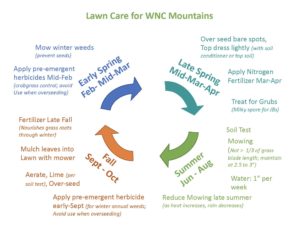Garden Update – September
go.ncsu.edu/readext?735479
en Español / em Português
El inglés es el idioma de control de esta página. En la medida en que haya algún conflicto entre la traducción al inglés y la traducción, el inglés prevalece.
Al hacer clic en el enlace de traducción se activa un servicio de traducción gratuito para convertir la página al español. Al igual que con cualquier traducción por Internet, la conversión no es sensible al contexto y puede que no traduzca el texto en su significado original. NC State Extension no garantiza la exactitud del texto traducido. Por favor, tenga en cuenta que algunas aplicaciones y/o servicios pueden no funcionar como se espera cuando se traducen.
Português
Inglês é o idioma de controle desta página. Na medida que haja algum conflito entre o texto original em Inglês e a tradução, o Inglês prevalece.
Ao clicar no link de tradução, um serviço gratuito de tradução será ativado para converter a página para o Português. Como em qualquer tradução pela internet, a conversão não é sensivel ao contexto e pode não ocorrer a tradução para o significado orginal. O serviço de Extensão da Carolina do Norte (NC State Extension) não garante a exatidão do texto traduzido. Por favor, observe que algumas funções ou serviços podem não funcionar como esperado após a tradução.
English
English is the controlling language of this page. To the extent there is any conflict between the English text and the translation, English controls.
Clicking on the translation link activates a free translation service to convert the page to Spanish. As with any Internet translation, the conversion is not context-sensitive and may not translate the text to its original meaning. NC State Extension does not guarantee the accuracy of the translated text. Please note that some applications and/or services may not function as expected when translated.
Collapse ▲
Purple hyacinth bean and moonflower vines are at their peak in September. Plant together to highlight the purple and white flowers. Collect seeds from both vines after the first frost in October and save them in a paper sack for next year.
Plants in Flower
Crapemyrtle, Rose-of-Sharon, Dahlia, Canna, Ginger Lily, Chrysanthemum, Spider Lily, Fall Crocus, Liriope, Sedum, Asters, Goldenrod, Joe Pye Weed, and summer annuals
What to Fertilize
Fertilize lawns (see below).
If you are trying to push trees or shrubs to grow as vigorously as possible, you can fertilize with 5-10-15 fertilizer this month.
What to Plant
- September is a good time to set out landscape plants. Shop early to find the nicest shrubs. When planting containerized plants, try to be certain to disturb or “open up” the plants’ root ball.
- Set out new chrysanthemum plants this month.
- Plant pansies to add color to your yard in the autumn, winter and spring months.
- Groundcovers will become well established if planted now.
- Transplant any evergreen trees or shrubs that need moving this month.
- Plant the following fall vegetables in September: mustard, onion, radish and turnip. If you do not have a fall vegetable garden plant legume cover crops like crimson clover or hairy vetch. Wait until October for small grains.
- Do NOT prune shrubs in September or October.
- Remove “weed” or unnecessary trees from your landscape.
- Root prune any trees or plants you plan to move next spring.
Pest Outlook
- Scout the following landscape shrubs for the following insect pests: arborvitae, hemlock and juniper(spider mites), azalea and pyracantha (lace bug) and euonymus (scale).
- Scout for peach tree borer on your nectarine and peach tree trunks.
- Scout roses.
- Scout fall vegetable plants. Insects and diseases are more severe in the autumn.
- Control woody weeds by spraying the recommended herbicide.
- Scout for fall armyworms now.
- Aerate, lime, fertilize and overseed tall fescue and bluegrass lawns this month.
- Remember to mulch the new grass seed areas with wheat or barley straw.
- Keep watered.
- Do NOT fertilize zoysia now.
- Homeowners can apply an insecticide for lawn grubs in early September if not completed in August.
Propagation
- Spring flowering bulbs can be divided and replanted this month.
- Daffodils will be the bulbs that most likely need this consideration.
- Clean up garden sprayers and lawn equipment if not in use.
- Prepare house plants to reenter your home. Check them carefully for insect pests.
- If you do not have a fall vegetable garden, it is a good time to chop, till, burn or discard dead vegetable plants.
- Look for spring flowering bulbs to plant in October.
- Purchase locally grown apples.
- You can get last year’s poinsettia to flower by placing it in total uninterrupted darkness for 15 hours a day, starting the last week of the month and continuing until colored bracts appear. Give them plenty of sunlight during the day.








